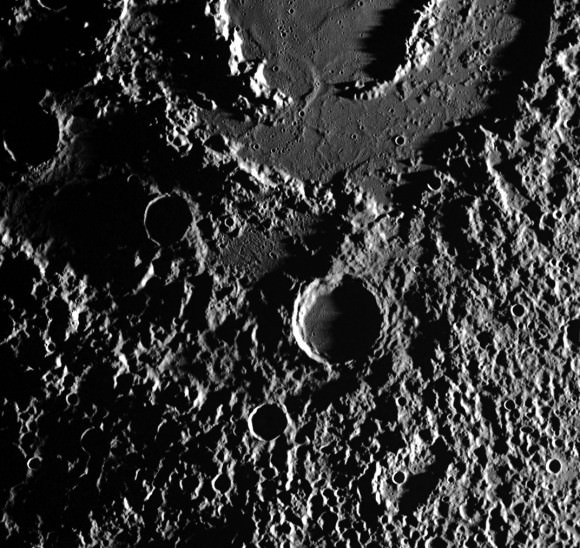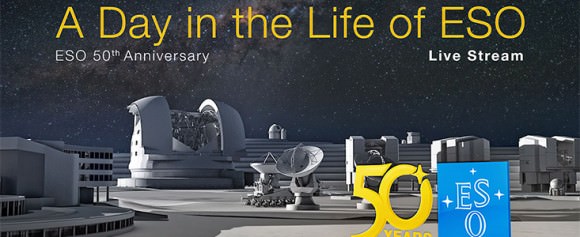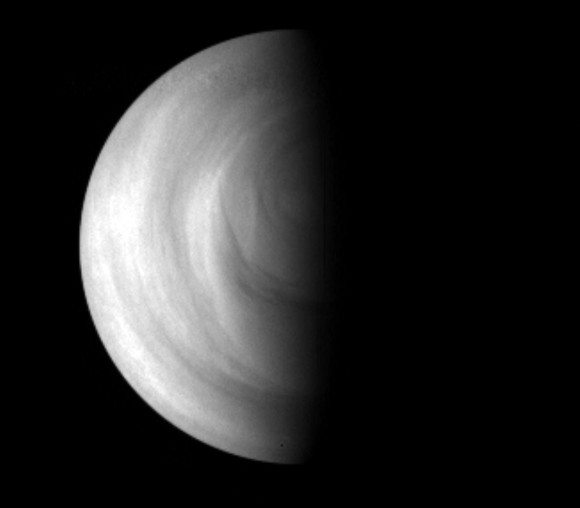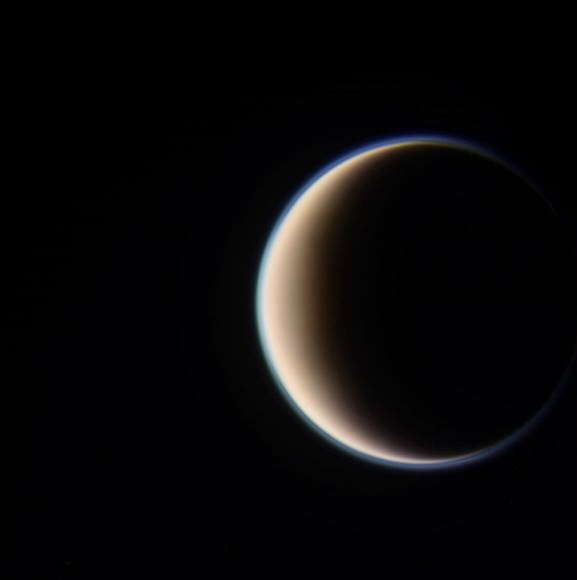We had another fantastic Virtual Star Party Sunday night, with a packed crew of astronomers, including a new face: Bill McLaughlin, streaming from Oregon.
Many many objects joined the party including: Andromeda, Cave Nebula, Pacman Nebula, Double Star Albiero, Wizard Nebula, Cat’s Paw Nebula, Veil Nebula, North America Nebula, Double Cluster, and more.
Astronomers: Stuart Forman, Roy Salisbury, Mike Chasin, Gary Gonella, Bill McLaughlin, David Dickinson.
Host: Fraser Cain
Want to experience the star party live? Circle the Virtual Star Party page on Google+, and you’ll get a notification when we post a new event. And speaking of events, we’ve posted next week’s Event here.
{ 0 comments }
The southern portion of Mercury’s Vivaldi basin and outlying rugged terrain
Named for the 17th-century Venetian composer, the southern half of Mercury’s Vivaldi basin is seen in this image acquired on August 26 by NASA’s MESSENGER spacecraft. The 213-km (132-mile) -wide crater’s smooth floor is contrasted by the incredibly rugged terrain beyond its outermost ring — a result of the ejected material that was flung out from the impact site and emphasized by the low angle of illumination.
The floor of the crater remained relatively smooth due to molten material that erupted in the wake of the impact event, flooding the basin.
Recent findings from the MESSENGER mission have revealed variations in Mercury’s surface composition due to volcanism that occurred at different times, as well as a surprising concentration of elements like magnesium and sulfur — much more so than any of the other terrestrial planets.
[click to continue…]
[click to continue…]
Ever wonder what takes place on a daily basis at one of the premier ground-based observatories? The European Southern Observatory (ESO) is celebrating its 50th anniversary, and on October 5, 2012, they will host a free, live event on the web, “A Day in the Life of ESO.” There will be live observations from ESO’s flagship observatory, the Very Large Telescope (VLT), on Cerro Paranal in Chile’s Atacama Desert, as well as talks from astronomers at ESO’s Headquarters in Germany. Members of the public are invited to ask questions in advance of the event, or during the stream, by Facebook, Twitter, and email.
[click to continue…]
[click to continue…]
Venus’ terminator – the transitional region between day and night — may fuel an unusually cold region in the atmosphere. Credit: ESA/MPS, Katlenburg-Lindau, Germany
The hottest planet in the Solar System has a surprisingly cold region high in the planet’s atmosphere, according to new findings by the Venus Express spacecraft. While surface temperatures on this hot and hostile planet tops out at 735 Kelvin, or 462 degrees Celsius, ESA scientists say that a layer in the atmosphere about 125 km up has temperatures of around –175 degrees C, and may be cold enough for carbon dioxide to freeze out as ice or snow.
This means this curious cold layer is much colder than any part of Earth’s atmosphere even though Venus is known for its dense, blistering atmosphere and is much closer to the Sun. Additionally, the cold layer appears to be affected by the transitioning between day and night on Venus.
[click to continue…]
[click to continue…]

Greetings, fellow SkyWatchers! Normally we don’t pay much attention to the waning Moon, but this week will be a bit different. Why not enjoy some alternative studies by viewing familiar features in a different light?! Of course, we might just pick up a galaxy or catch a snowball! When you’re ready, just meet me in the back yard… [click to continue…]
On September 26-27 Cassini executed its latest flyby of Titan, T-86, coming within 594 miles (956 km) of the cloud-covered moon in order to measure the effects of the Sun’s energy on its dense atmosphere and determine its variations at different altitudes.
The image above was captured as Cassini approached Titan from its night side, traveling about 13,000 mph (5.9 km/s). It’s a color-composite made from three separate raw images acquired in red, green and blue visible light filters.
Titan’s upper-level hydrocarbon haze is easily visible as a blue-green “shell” above its orange-colored clouds.
Read more: http://www.universetoday.com/#ixzz287ZngyN8



